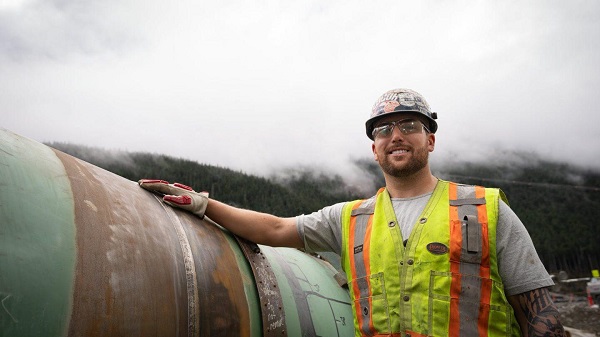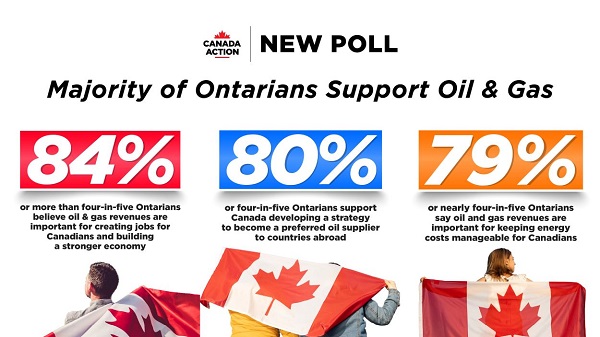Brownstone Institute
Fact-Checker, Check Thyself

From Brownstone Institute
BY
In two articles on this site on November 13 and March 18, Andrew Lowenthal explained the intimate connections in the Virality Project between the US government, Stanford University, and Big Tech, to enforce Covid orthodoxy via the Censorship Industrial Complex. A similar collusion has operated in Australia but not, as far as we know, as an initiative of the security state.
This is the ABC RMIT Fact Check Unit. It is hosted jointly by the Royal Melbourne Institute of Technology (RMIT) that is mostly a publicly funded institution and the public broadcaster the Australian Broadcasting Corporation (ABC) that is entirely funded by the state. It describes itself rather grandiosely as a partnership that combines “academic excellence and the best of Australian journalism to inform the public through an independent non-partisan voice.” This boast has helped to provide plausible cover for enforcing the orthodoxy of the medical establishment that suffers from the delusion that it is the single source of medical scientific truth.
The self-important pretentiousness was punctured this week. During a radio interview with 2GB host Ben Fordham on March 18, businessman Dick Smith said, “No country has ever been able to run entirely on renewables – that’s impossible.” He said this in the context of advocating for nuclear power to be added to Australia’s energy mix.
The Fact Check
ABC RMIT Fact Check promptly investigated this and adjudged that “experts consulted by RMIT ABC Fact Check suggested Mr Smith’s statement doesn’t hold up.”
In a follow-up interview on 2GB on March 25, Smith was angry. “The whole document is full of misinformation and lies, it’s designed to discredit me. Absolutely disgusting,” he told Fordham. He demanded immediate corrections from the taxpayer-funded broadcaster’s fact-check unit and threatened defamation action otherwise as the verdict was damaging his credibility.
US columnist Michael Shellenberger, who played a central role in breaking the Twitter Files story, said:
The Australian government is demanding that X, Facebook, and other social media companies censor content that its fact-checkers say is inaccurate. But now, one of the government’s main fact-checker groups has been caught spreading misinformation about renewables and nuclear.
X owner billionaire Elon Musk joined in, posting that “Having government ‘fact-checkers’ is a giant leap in the direction of tyranny!”
Bizarrely, to support its negative verdict on Smith, the fact check quoted Stanford University’s Professor Mark Jacobson to the effect that California had “been running on more than 100 per cent WWS [wind-water-solar] for 10 out of the last 11 days for between 0.25 and 6 hours per day.” Similarly, the fact check cited a forecast from the Australian Energy Market Operator that renewables will be able to meet the entire demand of the national electricity market by 2025, “albeit for short periods of time (for example, 30 minutes).”
This demonstrates gross reading comprehension problems. Or is it elementary maths? If California has been relying on renewables for between 0.25 and 6 hours per day, quite clearly that confirms Smith’s claim, for renewables could not manage power needs for between 18 to 23.75 hours per day. In addition, Smith claimed subsequently, California can draw on its own and two other states’ nuclear power as base-load backup power to renewables. Nor does a 30-minute capacity indicate the ability to meet Australia’s electricity demand 24/7 for 365 days a year.
The Proliferation of Fact-Checkers
The fact-check industry came into its own during the Covid years, gained in popularity, and proliferated in numbers of organizations and individuals. However, they typically operated with little transparency and clarity on the credentials of the fact-checkers and their qualifications to adjudicate between world-renowned experts making competing claims. After all, contestation is normal in scientific discourse. Anything that cannot be questioned but relies on authority alone is dogma, not science.
A good example of this syndrome was provided to this site on March 27 by Peter Gøtzsche, co-founder of the Cochrane Collaboration and Professor of Clinical Research Design and Analysis at the University of Copenhagen, who has published more than 97 papers in the “big five” medical journals (JAMA [Journal of the American Medical Association], Lancet, New England Journal of Medicine, British Medical Journal, and Annals of Internal Medicine).
Gøtzsche had produced a video of a conversation he had with Professor Christine Stabell Benn, “one of the most outstanding vaccine researchers in the world.” On their own Broken Medical Science site, the video (published last October) is described thus:
In this episode, Peter C Gøtzsche discusses with Professor Christine Stabell Benn the research that has shown that live, attenuated vaccines reduce total mortality by much more than their specific effects would predict; that non-live vaccines increase total mortality; that the order in which the vaccines are given is important for mortality; what the harms are of the Covid-19 vaccines; and why they are overused.
After reading Martin Kulldorff’s story in the City Journal on March 11 of how he was fired by Harvard University, Gøtzsche decided to test YouTube and put up the video on March 24. It was taken down within an hour for violating its medical misinformation policy. They appealed but having “reviewed your content carefully,” YouTube “confirmed that it violates our medical misinformation policy.” Gøtzsche was very impressed that YouTube fact-checkers were able to conduct a careful and thorough review of a 54-minute conversation, involving two internationally eminent medical experts, in less than an hour.
Is it any wonder that fact-checkers were quickly discredited for several reasons. They took official claims by governments and the WHO as authoritative and true. This produced some hilarious flip-flops as the narrative on Covid changed with respect, for example, to the likely origins of the coronavirus in Wuhan’s wet market or the research laboratory in the Wuhan Institute of Virology located just a few kilometres away. Also with respect to claims that the vaccines stop infection, transmission, and death.
Second, fact-checkers were shown to have a pronounced left-liberal bias. Third, their modus operandi turned out to be to ask different experts for their reactions to the claims under investigation and then side with the experts who aligned with their own bias. Fourth and most importantly, when challenged in court Facebook’s defence in December 2021 was that fact-check pronouncements were protected “opinions” under the First Amendment.
Thorsteinn Siglaugsson was wickedly accurate in sketching the typology of fact-checking techniques. Create a straw-man argument that can be easily knocked down. Assert that a claim is not supported by evidence, is questioned by other experts, lacks context, is misleading, or is only partly true, etc. Engage in ad hominem attacks against the person rather than with their evidence and argument.
ABC RMIT Fact Check, Check Your Own Facts
Smith makes the point that the fact-checker never contacted him. He could have told them he was talking about the total energy requirements, not just electricity requirements. Professor Jacobson told Fact Check that four countries draw 100 percent of their electricity power requirements solely from renewables: Albania, Bhutan, Paraguay, and Nepal.
The first thing to note is that even the electricity consumption per capita of the four countries is substantially lower than that of Australia as an advanced industrial economy (Figure 1).
Second, none of the four countries is an island continent without the option of connecting to a geographically wider energy grid to make up for shortfalls in national energy needs. In 2021, 24.1 percent of Albania’s, 27.6 percent of Nepal’s, and 10.1 percent of Paraguay’s energy needs were met from imports.

Third, according to Our World in Data, the share of electricity production from renewables for Paraguay was 99.88 percent in 2021, and for the remaining three was 100 percent. But power for the electricity grid made up only 22, 41, 13, and 38 percent of the total energy consumption of Albania, Bhutan, Nepal, and Paraguay, respectively.

Figure 2 shows the energy mix of three countries using data from the International Energy Agency (Bhutan’s is not available from that source).
Nepal
I’d like to look in more detail at Nepal, for a simple reason. I was born and grew up in the state of Bihar just 20-30km from the border with Nepal which is an open border for citizens of the two countries. Consequently I am intimately familiar with life and communities on both sides of the border. Like people in northern Bihar, many Nepalese lack access to electricity and rely heavily on wood, agricultural waste, and dung with high CO2 emissions for their daily cooking and heating needs.
Similarly, on both sides of the border fossil fuels power the majority of transportation and diesel generators are commonly used as a power source to offset unreliable grid electricity supply. Speaking of which, a common complaint from local Indians is that Nepal imports a lot of the electricity produced in India even though India’s own power requirements are not fully met.
In other words, the ABC RMIT Fact Check conclusions were misleading, lacked context, and made false claims about what Dick Smith had said in his interview. Good to see that despite repeated insistence that it was standing by its work, late on March 26 the Fact Check unit apologized to Smith and amended its report.
But this does rather beg the question. Having stood by their verdict for over a week, ABC buckled upon receiving a letter from Smith’s lawyers. He is both a public figure with access to media and politicians and very wealthy. The founder of the successful Australia-New Zealand retail chain Dick Smith Electronics, his state honour includes the highest level of civilian recognition, the Companion of the Order of Australia (AC), awarded in 2015. Ninety-nine percent of Australians lack his reach and ability to issue credible legal threats and risk penury. Consequently his win is unlikely, on its own, to end the ABC’s attitude problem rooted in arrogance, hubris, and complacency.
An earlier version of this was published in The Epoch Times Australia on March 27.
Addictions
Coffee, Nicotine, and the Politics of Acceptable Addiction

From the Brownstone Institute
By
Every morning, hundreds of millions of people perform a socially approved ritual. They line up for coffee. They joke about not being functional without caffeine. They openly acknowledge dependence and even celebrate it. No one calls this addiction degenerate. It is framed as productivity, taste, wellness—sometimes even virtue.
Now imagine the same professional discreetly using a nicotine pouch before a meeting. The reaction is very different. This is treated as a vice, something vaguely shameful, associated with weakness, poor judgment, or public health risk.
From a scientific perspective, this distinction makes little sense.
Caffeine and nicotine are both mild psychoactive stimulants. Both are plant-derived alkaloids. Both increase alertness and concentration. Both produce dependence. Neither is a carcinogen. Neither causes the diseases historically associated with smoking. Yet one has become the world’s most acceptable addiction, while the other remains morally polluted even in its safest, non-combustible forms.
This divergence has almost nothing to do with biology. It has everything to do with history, class, marketing, and a failure of modern public health to distinguish molecules from mechanisms.
Two Stimulants, One Misunderstanding
Nicotine acts on nicotinic acetylcholine receptors, mimicking a neurotransmitter the brain already uses to regulate attention and learning. At low doses, it improves focus and mood. At higher doses, it causes nausea and dizziness—self-limiting effects that discourage excess. Nicotine is not carcinogenic and does not cause lung disease.
Caffeine works differently, blocking adenosine receptors that signal fatigue. The result is wakefulness and alertness. Like nicotine, caffeine indirectly affects dopamine, which is why people rely on it daily. Like nicotine, it produces tolerance and withdrawal. Headaches, fatigue, and irritability are routine among regular users who skip their morning dose.
Pharmacologically, these substances are peers.
The major difference in health outcomes does not come from the molecules themselves but from how they have been delivered.
Combustion Was the Killer
Smoking kills because burning organic material produces thousands of toxic compounds—tar, carbon monoxide, polycyclic aromatic hydrocarbons, and other carcinogens. Nicotine is present in cigarette smoke, but it is not what causes cancer or emphysema. Combustion is.
When nicotine is delivered without combustion—through patches, gum, snus, pouches, or vaping—the toxic burden drops dramatically. This is one of the most robust findings in modern tobacco research.
And yet nicotine continues to be treated as if it were the source of smoking’s harm.
This confusion has shaped decades of policy.
How Nicotine Lost Its Reputation
For centuries, nicotine was not stigmatized. Indigenous cultures across the Americas used tobacco in religious, medicinal, and diplomatic rituals. In early modern Europe, physicians prescribed it. Pipes, cigars, and snuff were associated with contemplation and leisure.
The collapse came with industrialization.
The cigarette-rolling machine of the late 19th century transformed nicotine into a mass-market product optimized for rapid pulmonary delivery. Addiction intensified, exposure multiplied, and combustion damage accumulated invisibly for decades. When epidemiology finally linked smoking to lung cancer and heart disease in the mid-20th century, the backlash was inevitable.
But the blame was assigned crudely. Nicotine—the named psychoactive component—became the symbol of the harm, even though the damage came from smoke.
Once that association formed, it hardened into dogma.
How Caffeine Escaped
Caffeine followed a very different cultural path. Coffee and tea entered global life through institutions of respectability. Coffeehouses in the Ottoman Empire and Europe became centers of commerce and debate. Tea was woven into domestic ritual, empire, and gentility.
Crucially, caffeine was never bound to a lethal delivery system. No one inhaled burning coffee leaves. There was no delayed epidemic waiting to be discovered.
As industrial capitalism expanded, caffeine became a productivity tool. Coffee breaks were institutionalized. Tea fueled factory schedules and office routines. By the 20th century, caffeine was no longer seen as a drug at all but as a necessity of modern life.
Its downsides—dependence, sleep disruption, anxiety—were normalized or joked about. In recent decades, branding completed the transformation. Coffee became lifestyle. The stimulant disappeared behind aesthetics and identity.
The Class Divide in Addiction
The difference between caffeine and nicotine is not just historical. It is social.
Caffeine use is public, aesthetic, and professionally coded. Carrying a coffee cup signals busyness, productivity, and belonging in the middle class. Nicotine use—even in clean, low-risk forms—is discreet. It is not aestheticized. It is associated with coping rather than ambition.
Addictions favored by elites are rebranded as habits or wellness tools. Addictions associated with stress, manual labor, or marginal populations are framed as moral failings. This is why caffeine is indulgence and nicotine is degeneracy, even when the physiological effects are similar.
Where Public Health Went Wrong
Public health messaging relies on simplification. “Smoking kills” was effective and true. But over time, simplification hardened into distortion.
“Smoking kills” became “Nicotine is addictive,” which slid into “Nicotine is harmful,” and eventually into claims that there is “No safe level.” Dose, delivery, and comparative risk disappeared from the conversation.
Institutions now struggle to reverse course. Admitting that nicotine is not the primary harm agent would require acknowledging decades of misleading communication. It would require distinguishing adult use from youth use. It would require nuance.
Bureaucracies are bad at nuance.
So nicotine remains frozen at its worst historical moment: the age of the cigarette.
Why This Matters
This is not an academic debate. Millions of smokers could dramatically reduce their health risks by switching to non-combustion nicotine products. Countries that have allowed this—most notably Sweden—have seen smoking rates and tobacco-related mortality collapse. Countries that stigmatize or ban these alternatives preserve cigarette dominance.
At the same time, caffeine consumption continues to rise, including among adolescents, with little moral panic. Energy drinks are aggressively marketed. Sleep disruption and anxiety are treated as lifestyle issues, not public health emergencies.
The asymmetry is revealing.
Coffee as the Model Addiction
Caffeine succeeded culturally because it aligned with power. It supported work, not resistance. It fit office life. It could be branded as refinement. It never challenged institutional authority.
Nicotine, especially when used by working-class populations, became associated with stress relief, nonconformity, and failure to comply. That symbolism persisted long after the smoke could be removed.
Addictions are not judged by chemistry. They are judged by who uses them and whether they fit prevailing moral narratives.
Coffee passed the test. Nicotine did not.
The Core Error
The central mistake is confusing a molecule with a method. Nicotine did not cause the smoking epidemic. Combustion did. Once that distinction is restored, much of modern tobacco policy looks incoherent. Low-risk behaviors are treated as moral threats, while higher-risk behaviors are tolerated because they are culturally embedded.
This is not science. It is politics dressed up as health.
A Final Thought
If we applied the standards used against nicotine to caffeine, coffee would be regulated like a controlled substance. If we applied the standards used for caffeine to nicotine, pouches and vaping would be treated as unremarkable adult choices.
The rational approach is obvious: evaluate substances based on dose, delivery, and actual harm. Stop moralizing chemistry. Stop pretending that all addictions are equal. Nicotine is not harmless. Neither is caffeine. But both are far safer than the stories told about them.
This essay only scratches the surface. The strange moral history of nicotine, caffeine, and acceptable addiction exposes a much larger problem: modern institutions have forgotten how to reason about risk.
Brownstone Institute
The Unmasking of Vaccine Science

From the Brownstone Institute
By
I recently purchased Aaron Siri’s new book Vaccines, Amen. As I flipped though the pages, I noticed a section devoted to his now-famous deposition of Dr Stanley Plotkin, the “godfather” of vaccines.
I’d seen viral clips circulating on social media, but I had never taken the time to read the full transcript — until now.
Siri’s interrogation was methodical and unflinching…a masterclass in extracting uncomfortable truths.
A Legal Showdown
In January 2018, Dr Stanley Plotkin, a towering figure in immunology and co-developer of the rubella vaccine, was deposed under oath in Pennsylvania by attorney Aaron Siri.
The case stemmed from a custody dispute in Michigan, where divorced parents disagreed over whether their daughter should be vaccinated. Plotkin had agreed to testify in support of vaccination on behalf of the father.
What followed over the next nine hours, captured in a 400-page transcript, was extraordinary.
Plotkin’s testimony revealed ethical blind spots, scientific hubris, and a troubling indifference to vaccine safety data.
He mocked religious objectors, defended experiments on mentally disabled children, and dismissed glaring weaknesses in vaccine surveillance systems.
A System Built on Conflicts
From the outset, Plotkin admitted to a web of industry entanglements.
He confirmed receiving payments from Merck, Sanofi, GSK, Pfizer, and several biotech firms. These were not occasional consultancies but long-standing financial relationships with the very manufacturers of the vaccines he promoted.
Plotkin appeared taken aback when Siri questioned his financial windfall from royalties on products like RotaTeq, and expressed surprise at the “tone” of the deposition.
Siri pressed on: “You didn’t anticipate that your financial dealings with those companies would be relevant?”
Plotkin replied: “I guess, no, I did not perceive that that was relevant to my opinion as to whether a child should receive vaccines.”
The man entrusted with shaping national vaccine policy had a direct financial stake in its expansion, yet he brushed it aside as irrelevant.
Contempt for Religious Dissent
Siri questioned Plotkin on his past statements, including one in which he described vaccine critics as “religious zealots who believe that the will of God includes death and disease.”
Siri asked whether he stood by that statement. Plotkin replied emphatically, “I absolutely do.”
Plotkin was not interested in ethical pluralism or accommodating divergent moral frameworks. For him, public health was a war, and religious objectors were the enemy.
He also admitted to using human foetal cells in vaccine production — specifically WI-38, a cell line derived from an aborted foetus at three months’ gestation.
Siri asked if Plotkin had authored papers involving dozens of abortions for tissue collection. Plotkin shrugged: “I don’t remember the exact number…but quite a few.”
Plotkin regarded this as a scientific necessity, though for many people — including Catholics and Orthodox Jews — it remains a profound moral concern.
Rather than acknowledging such sensitivities, Plotkin dismissed them outright, rejecting the idea that faith-based values should influence public health policy.
That kind of absolutism, where scientific aims override moral boundaries, has since drawn criticism from ethicists and public health leaders alike.
As NIH director Jay Bhattacharya later observed during his 2025 Senate confirmation hearing, such absolutism erodes trust.
“In public health, we need to make sure the products of science are ethically acceptable to everybody,” he said. “Having alternatives that are not ethically conflicted with foetal cell lines is not just an ethical issue — it’s a public health issue.”
Safety Assumed, Not Proven
When the discussion turned to safety, Siri asked, “Are you aware of any study that compares vaccinated children to completely unvaccinated children?”
Plotkin replied that he was “not aware of well-controlled studies.”
Asked why no placebo-controlled trials had been conducted on routine childhood vaccines such as hepatitis B, Plotkin said such trials would be “ethically difficult.”
That rationale, Siri noted, creates a scientific blind spot. If trials are deemed too unethical to conduct, then gold-standard safety data — the kind required for other pharmaceuticals — simply do not exist for the full childhood vaccine schedule.
Siri pointed to one example: Merck’s hepatitis B vaccine, administered to newborns. The company had only monitored participants for adverse events for five days after injection.
Plotkin didn’t dispute it. “Five days is certainly short for follow-up,” he admitted, but claimed that “most serious events” would occur within that time frame.
Siri challenged the idea that such a narrow window could capture meaningful safety data — especially when autoimmune or neurodevelopmental effects could take weeks or months to emerge.
Siri pushed on. He asked Plotkin if the DTaP and Tdap vaccines — for diphtheria, tetanus and pertussis — could cause autism.
“I feel confident they do not,” Plotkin replied.
But when shown the Institute of Medicine’s 2011 report, which found the evidence “inadequate to accept or reject” a causal link between DTaP and autism, Plotkin countered, “Yes, but the point is that there were no studies showing that it does cause autism.”
In that moment, Plotkin embraced a fallacy: treating the absence of evidence as evidence of absence.
“You’re making assumptions, Dr Plotkin,” Siri challenged. “It would be a bit premature to make the unequivocal, sweeping statement that vaccines do not cause autism, correct?”
Plotkin relented. “As a scientist, I would say that I do not have evidence one way or the other.”
The MMR
The deposition also exposed the fragile foundations of the measles, mumps, and rubella (MMR) vaccine.
When Siri asked for evidence of randomised, placebo-controlled trials conducted before MMR’s licensing, Plotkin pushed back: “To say that it hasn’t been tested is absolute nonsense,” he said, claiming it had been studied “extensively.”
Pressed to cite a specific trial, Plotkin couldn’t name one. Instead, he gestured to his own 1,800-page textbook: “You can find them in this book, if you wish.”
Siri replied that he wanted an actual peer-reviewed study, not a reference to Plotkin’s own book. “So you’re not willing to provide them?” he asked. “You want us to just take your word for it?”
Plotkin became visibly frustrated.
Eventually, he conceded there wasn’t a single randomised, placebo-controlled trial. “I don’t remember there being a control group for the studies, I’m recalling,” he said.
The exchange foreshadowed a broader shift in public discourse, highlighting long-standing concerns that some combination vaccines were effectively grandfathered into the schedule without adequate safety testing.
In September this year, President Trump called for the MMR vaccine to be broken up into three separate injections.
The proposal echoed a view that Andrew Wakefield had voiced decades earlier — namely, that combining all three viruses into a single shot might pose greater risk than spacing them out.
Wakefield was vilified and struck from the medical register. But now, that same question — once branded as dangerous misinformation — is set to be re-examined by the CDC’s new vaccine advisory committee, chaired by Martin Kulldorff.
The Aluminium Adjuvant Blind Spot
Siri next turned to aluminium adjuvants — the immune-activating agents used in many childhood vaccines.
When asked whether studies had compared animals injected with aluminium to those given saline, Plotkin conceded that research on their safety was limited.
Siri pressed further, asking if aluminium injected into the body could travel to the brain. Plotkin replied, “I have not seen such studies, no, or not read such studies.”
When presented with a series of papers showing that aluminium can migrate to the brain, Plotkin admitted he had not studied the issue himself, acknowledging that there were experiments “suggesting that that is possible.”
Asked whether aluminium might disrupt neurological development in children, Plotkin stated, “I’m not aware that there is evidence that aluminum disrupts the developmental processes in susceptible children.”
Taken together, these exchanges revealed a striking gap in the evidence base.
Compounds such as aluminium hydroxide and aluminium phosphate have been injected into babies for decades, yet no rigorous studies have ever evaluated their neurotoxicity against an inert placebo.
This issue returned to the spotlight in September 2025, when President Trump pledged to remove aluminium from vaccines, and world-leading researcher Dr Christopher Exley renewed calls for its complete reassessment.
A Broken Safety Net
Siri then turned to the reliability of the Vaccine Adverse Event Reporting System (VAERS) — the primary mechanism for collecting reports of vaccine-related injuries in the United States.
Did Plotkin believe most adverse events were captured in this database?
“I think…probably most are reported,” he replied.
But Siri showed him a government-commissioned study by Harvard Pilgrim, which found that fewer than 1% of vaccine adverse events are reported to VAERS.
“Yes,” Plotkin said, backtracking. “I don’t really put much faith into the VAERS system…”
Yet this is the same database officials routinely cite to claim that “vaccines are safe.”
Ironically, Plotkin himself recently co-authored a provocative editorial in the New England Journal of Medicine, conceding that vaccine safety monitoring remains grossly “inadequate.”
Experimenting on the Vulnerable
Perhaps the most chilling part of the deposition concerned Plotkin’s history of human experimentation.
“Have you ever used orphans to study an experimental vaccine?” Siri asked.
“Yes,” Plotkin replied.
“Have you ever used the mentally handicapped to study an experimental vaccine?” Siri asked.
“I don’t recollect…I wouldn’t deny that I may have done so,” Plotkin replied.
Siri cited a study conducted by Plotkin in which he had administered experimental rubella vaccines to institutionalised children who were “mentally retarded.”
Plotkin stated flippantly, “Okay well, in that case…that’s what I did.”
There was no apology, no sign of ethical reflection — just matter-of-fact acceptance.
Siri wasn’t done.
He asked if Plotkin had argued that it was better to test on those “who are human in form but not in social potential” rather than on healthy children.
Plotkin admitted to writing it.
Siri established that Plotkin had also conducted vaccine research on the babies of imprisoned mothers, and on colonised African populations.
Plotkin appeared to suggest that the scientific value of such studies outweighed the ethical lapses—an attitude that many would interpret as the classic ‘ends justify the means’ rationale.
But that logic fails the most basic test of informed consent. Siri asked whether consent had been obtained in these cases.
“I don’t remember…but I assume it was,” Plotkin said.
Assume?
This was post-Nuremberg research. And the leading vaccine developer in America couldn’t say for sure whether he had properly informed the people he experimented on.
In any other field of medicine, such lapses would be disqualifying.
A Casual Dismissal of Parental Rights
Plotkin’s indifference to experimenting on disabled children didn’t stop there.
Siri asked whether someone who declined a vaccine due to concerns about missing safety data should be labelled “anti-vax.”
Plotkin replied, “If they refused to be vaccinated themselves or refused to have their children vaccinated, I would call them an anti-vaccination person, yes.”
Plotkin was less concerned about adults making that choice for themselves, but he had no tolerance for parents making those choices for their own children.
“The situation for children is quite different,” said Plotkin, “because one is making a decision for somebody else and also making a decision that has important implications for public health.”
In Plotkin’s view, the state held greater authority than parents over a child’s medical decisions — even when the science was uncertain.
The Enabling of Figures Like Plotkin
The Plotkin deposition stands as a case study in how conflicts of interest, ideology, and deference to authority have corroded the scientific foundations of public health.
Plotkin is no fringe figure. He is celebrated, honoured, and revered. Yet he promotes vaccines that have never undergone true placebo-controlled testing, shrugs off the failures of post-market surveillance, and admits to experimenting on vulnerable populations.
This is not conjecture or conspiracy — it is sworn testimony from the man who helped build the modern vaccine program.
Now, as Health Secretary Robert F. Kennedy, Jr. reopens long-dismissed questions about aluminium adjuvants and the absence of long-term safety studies, Plotkin’s once-untouchable legacy is beginning to fray.
Republished from the author’s Substack
-

 Bruce Dowbiggin2 days ago
Bruce Dowbiggin2 days agoIn Contentious Canada Reality Is Still Six Degrees Of Hockey
-

 Alberta1 day ago
Alberta1 day agoThe Canadian Energy Centre’s biggest stories of 2025
-

 Business2 days ago
Business2 days agoCanada needs serious tax cuts in 2026
-

 Business1 day ago
Business1 day agoOttawa Is Still Dodging The China Interference Threat
-

 Business1 day ago
Business1 day agoMinneapolis day care filmed empty suddenly fills with kids
-

 Business1 day ago
Business1 day agoDisclosures reveal Minnesota politician’s husband’s companies surged thousands-fold amid Somali fraud crisis
-

 Business1 day ago
Business1 day agoResurfaced Video Shows How Somali Scammers Used Day Care Centers To Scam State
-

 Business2 days ago
Business2 days agoDOOR TO DOOR: Feds descend on Minneapolis day cares tied to massive fraud












